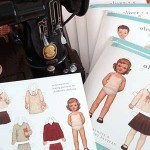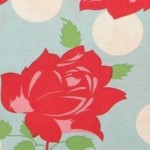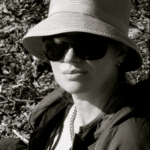New sewing machine needed
-
16 years ago LINK
littlebirdy @littlebirdy
Sorry to start a new thread again! Maybe we could have one that is just for chat?
Anyway . . . I’ve had a total disaster as my sewing machine has tragically died. Any recommendations for a new one?
Many thanks,
Robyn
16 years ago LINKOh yes, chat away whenever you like!
I think it helps to make a list of the features you want and the types of things you’ll be sewing, and then start talking to a few dealers who represent more than one brand of machine. Many of today’s machines have all sorts of bells and whistles that sound really great in the store and then you’ll never use them. (I mean, how many Winnie the Pooh embroideries will you really apply to your child’s clothing?) Test drive several machines (bring along your own fabric, and work on a project that you would actually make with the machine so you’ll get a better sense of how it feels and handles) and talk to other people who have the same machines you’re considering to hear what their experiences have been. It also helps to have a budget in mind, since the range of prices is ENORMOUS. (One of my machines cost under $250 and the other was around $2000, so it’s a good idea to know what you can spend before you go shopping. It will also help the salesperson to identify machines that will fit your experience and budget.)
Newer machines have all sorts of exciting features (I love the buttonhole options on my high-end Janome, and I couldn’t live without the walking foot), but the older machines are built with metal parts that last longer, so you’ll need to decide whether you want to purchase new or used. My personal preference is for new, since I really love the computerized controls (the buttonhole and the automatic thread cutter are my best friends), but April can talk to you about the miracle of the Featherweight and its abilities.
Let us know how it goes! I’m sure other people on the forum will have additional advice to offer. Have fun!
16 years ago LINKlittlebirdy @littlebirdy
Well . . . sometimes I can’t sleep for wishing I could embroider Winnie the Pooh with gay abandon!
Tee hee.
I had a good look in the local sewing centre this morning and they had a Janome machine that I liked the look of – complete with a few different button holes! Its a 8077. Not hugely expensive but very solid and when I tried it I felt like it should belong to me!
The lack of any kind of Disney motifs is obviously a huge off put, though!
Thanks for the advice,
Robyn
16 years ago LINKlittlebirdy @littlebirdy
Oh, by the way – what’s a walking foot? Not sure if it’s got that.
16 years ago LINKI should be more careful what I say about poor Pooh…
A walking foot is used mostly for quilting. It’s a special foot that has feed dogs (those teeth that move the fabric underneath your regular sewing foot) on top. So your fabric will be fed evenly when you sew–the top fabric doesn’t get pushed forward by the presser foot while the feed dogs pull the bottom fabric behind. It’s essential for quilting, very useful/essential for sewing laminates, and comes in handy in many, many situations. I use mine all the time, and you can get one for nearly any new machine, but be sure to ask when you buy it. It will cost additional money (maybe $50 for a basic foot?), but you’ll be so glad you have it.
By the way, I’m sorry to hear about the old machine. RIP. But it will be fun to find a new one!
16 years ago LINKAnd I’d probably be even more harsh with the Disney princesses, come to think of it. Or Dora?
Forgive me.
16 years ago LINKlittlebirdy @littlebirdy
Just imagine . . . a jump rope dress appearing on Flickr with a Hannah Montana motif! You’d have to take legal action!
16 years ago LINK April Henry
@April1930s
April Henry
@April1930s
The key to a good Walking Foot is making sure the feed on the foot align fairly close to the feed on your machine. I use the Walking Foot we stock, (which is designed for feed on the old low shank Singer Sewing Machines – i.e. 66, 99, 201, Featherweight 221 & 222) all the time. I used it just last night, in fact, when using flannel to make the Oliver + S Bedtime Story PJs. I had forgotten how much flannel wants to be pushed by a regular sewing foot. No matter my pinning or holding taut, it kept shifting which was annoying me to no end at 2am until I finally stopped midseam and brought out the walking foot. They really are a handy tool to have.
Anyway, your walking foot will feed more accurately if the feed aligns with the machine you are using.
As far as machines go: do you require zigzag? do you have a serger? I don’t zigzag very often because I serge most all of my inside seams, so using an old straight stitch Singer has been quite advantageous for so many reasons. Yesterday, I repaired a pair of leather shoes for my daughter – a little elastic loop had come undone which lost the button. The old all-metal machines of old were made to last and do just about any household job. They’re good on the budget, too! $100-$600-ish? depending on where you buy, whether from a private party or reputable dealer.
However, when a satin stitch zigzag was required for a recent project, my little zigzag attachment (which moves the fabric back and forth rather than the needle moving back and forth) on my straight stitch Singer was unable to do it because the pocket was just a tad too thick. I needed to get out my newer Elna machine which zigzagged a satin stitch beautifully.
The best of both worlds for the old, all-metal quality and stitch capability is, hands down, the old mocha brown Singer 401, 500 or 503. They not only have the power to go through any household sewing project, but they also have decorative stitches and zigzag stitches built-in just like the new machines. I’ve seen these models on Craigslist for $200 or less. You’d still want to have it serviced, of course.
If you find an old Singer straight stitch machine, then I recommend the Singer 99, 201, 221 or 222 (Featherweight) or the 301. While I use the 222 Featherweight pretty much exclusively, my friend, Karen, uses the 301 for all her sewing.
Just some more to think about regarding machines. Have fun exploring and shopping! 🙂
P.S. I should add that I only recommend Singers that were made in the 1960’s and EARLIER. Anything beyond that really isn’t worth it.
16 years ago LINKlittlebirdy @littlebirdy
Thank you! Amazing advice.
There is a singer sewing machine that was my mum’s that I should be able to have one day. I’m bit too emotional about having it now and I’m not sure my dad would let it go. I’ll try to find out what the model is, though. I think I remember it being a pale cream colour. Def not mocha.
I have checked and there is a walking foot that would fit the Janome machine I’m looking at. I’ll wait and see how my sewing goes!
I’m impressed at you sewing at 2am! What time did you have to get up? I have a 9pm cut off, although with our twins and 3 year old we often have activity in the night and early wake ups.
Big thanks!
Robyn (cold, miserable, damp and grey in England)
16 years ago LINK April Henry
@April1930s
April Henry
@April1930s
Hi, Robyn – 2am is like 9am your time – so it’s all good. HEHE!
Sewing in the evenings is pretty much my only justifiable time. We have our online business work during the day of which I am (supposed) dedicate my daily time to while the kids are in school.
You are from England! I would love to just sit and listen to you read the phone book!
16 years ago LINKlittlebirdy @littlebirdy
Well . . . any time. Give me a ring and I’ll happily give you my best reading voice!
I’ve just been ironing bias binding and finding it strangely satisfying! Had to stop as the 9pm curfew has been reached!
Not sure what time it is there, but I’m off to bed!
16 years ago LINKElka @Elka
My family has always owned Pfaffs, which we love. I own a very solid basic model that fulfills 90 percent of my needs, but I am always wishing I had my mom’s computerized model with more options. It does so many things that are so helpful. For example I can ever so slightly move her needle position from left to right, really nice when sewing zippers or piping. My advice is to consider where your sewing may take you, because you don’t want to outgrow your machine.
16 years ago LINK KarenK
@KarenK
KarenK
@KarenK
My very first machine was a basic Kenmore model that I bought in 1994. It’s not fancy but it’s worked very well for me over the years. I keep it as a back up now and use a Singer 301a for my primary machine. It’s an oldy but I just can’t replace it no matter how many machines I test drive. Someday I hope for a new Bernina, but until then I’ll stick to my Singer.
12 years ago LINK Nicole
@motherof5
Nicole
@motherof5
Bumped!
12 years ago LINKpiercenb @piercenb
I see this is an old thread, but I was researching the old singer models April recommended, and I’m unsure of one thing…no free arm. I like the reliability and sturdiness of old machines, I have my grandmothers Featherweight and it stitches beautifully. But, no zig zag and no free arm are a hassle when I want to applique a cutout on my children’s clothes, and no free arm makes the little sleeves and cuffs trickier. Does anyone have any thoughts?
You must be logged in to reply to this topic.
copyright
Unless otherwise credited, all work on this blog is © Liesl + Co., Inc, 2008-2026. You are welcome to link to this blog, but please ask permission before using any text or images.